We all know that AMD and Nvidia rarely disappoint us with their GPUs, but until the release of the 6800 XT, AMD didn’t pose much of a threat to Nvidia in the high-end range of GPUs. Nvidia’s RTX 30 series of GPUs proved to be the biggest leap in GPU power in a very long time, but the 3070 is not the flagship model of the series.
So, when comparing the 6800XT vs the 3070, I have to lean toward AMD, and I’ll explain in detail why in this comparison. Keep reading to find out.
6800XT vs 3070 – Quick Comparison
AMD reached for the stars when they released the 6800 XT, and boy did they grab them. This RDNA2 architecture GPU gave us a palpable boost in performance compared to previous AMD models in terms of Ray Tracing, DirectX 12 support, and 4K possibilities.
Nvidia’s RTX 3070 offers a bit less than the 6800 XT, but it also comes at a lower price. Even so, it’s an Ampere-based GPU, which means it offers us a lot of possibilities and great specs, even if it isn’t at the top of my “best-ever” GPU list.
| Radeon 6800 XT | Specs | GeForce RTX 3070 |
|---|---|---|
| Navi 21 XT (215-121000177) | GPU | GA104-300-A1 |
| PCIe 4.0 x16 | Interface | PCIe 4.0 x16 |
| RDNA 2.0 | Architecture | Ampere |
| 8,960 Stream Processors | GPU Cores | 5,888 CUDA Cores |
| 288 | TMUs/Tensor Cores | 184 |
| 72 Ray Accelerators | RT Cores | 46 RT Cores |
| 1.825 GHz | Base Clock | 1.50 GHz |
| 2.25 GHz | Boost Clock | 1.73 GHz |
| 2.8 GHz | Max Clock | 2.1 GHz |
| GDDR6 | Memory | GDDR6 |
| 16 GB | Memory Size | 8 GB |
| 2,000 MHz | Memory Speed | 1,750MHz |
| 512.0 GB/s | Bandwidth | 448GBps |
| 256-bit | Memory Bus | 256-bit |
| 300 W | TDP (Founders Edition) | 220 W |
| 700 W | Required PSU (Founders Edition) | 650 W |
| 1x HDMI 2x DisplayPort USB Type-C | Outputs | HDMI 3x DisplayPort |
| 7680×4320 | Maximum Digital Resolution | 7680×4320 |
| Check Price on Amazon | Price | Check Price on Amazon |
RX 6800XT
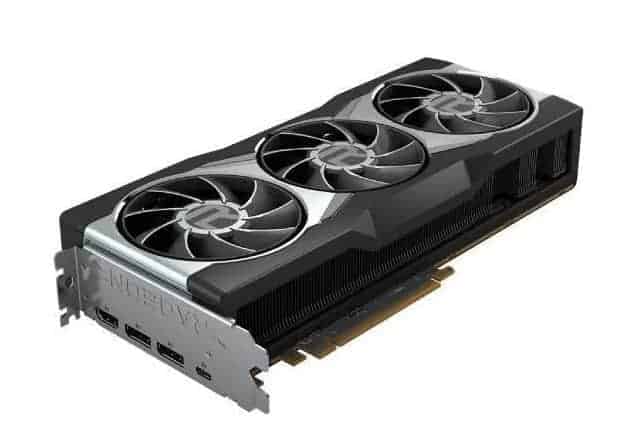
AMD, founded in 1969 in Silicon Valley, is much more than a GPU manufacturer (in case you didn’t know). AMD is a global leader in CPU development and (more recently) cloud infrastructure, yet they were struggling a bit with their high-end GPUs until the 6800 XT. This GPU rivals Nvidia’s flagship model and blows the 3070 away in many aspects.
Pros:
- Future-proof GDDR6 capacity
- Solid 4K performance
- Excellent at 1080 and 1440p
- Smart Access Memory
Cons:
- Higher price
- More power consumption
RTX 3070
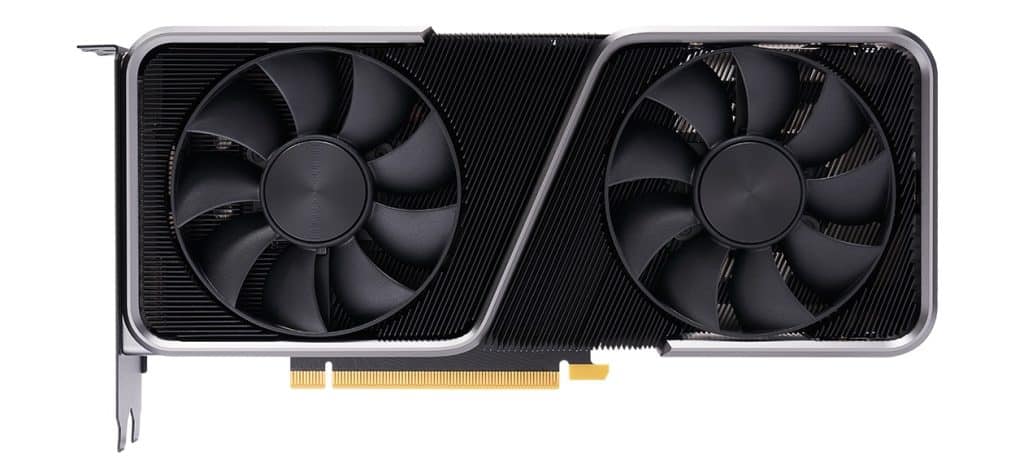
Nvidia is slightly younger than AMD, founded just under 30 years ago. Nvidia predicted the need for better GPUs and foresaw what was to come in gaming. Unlike AMD, they focus only on GPU power, the power that is behind many computers, robots, self-driving vehicles, and the development of AI tech. Many crypto-mining operations rely on Nvidia GPUs as well.
Pros:
- Great at 1080p and 1440p
- Great 4K performance
- Uses less power
- Lower cost
Cons:
- Low FPS at max settings
- Smaller GDDR6 capacity
6800XT vs 3070 – Key Specifications
Architecture
The 6800 XT is based on AMD’s RDNA2 architecture, as is the entire RX 6000 series. AMD says this offers us a 65% increase in performance per watt compared to their previous generation. A key innovation of RDNA2 was the introduction of AMD Infinity Cache, which enables higher bandwidth at lower power and latency.
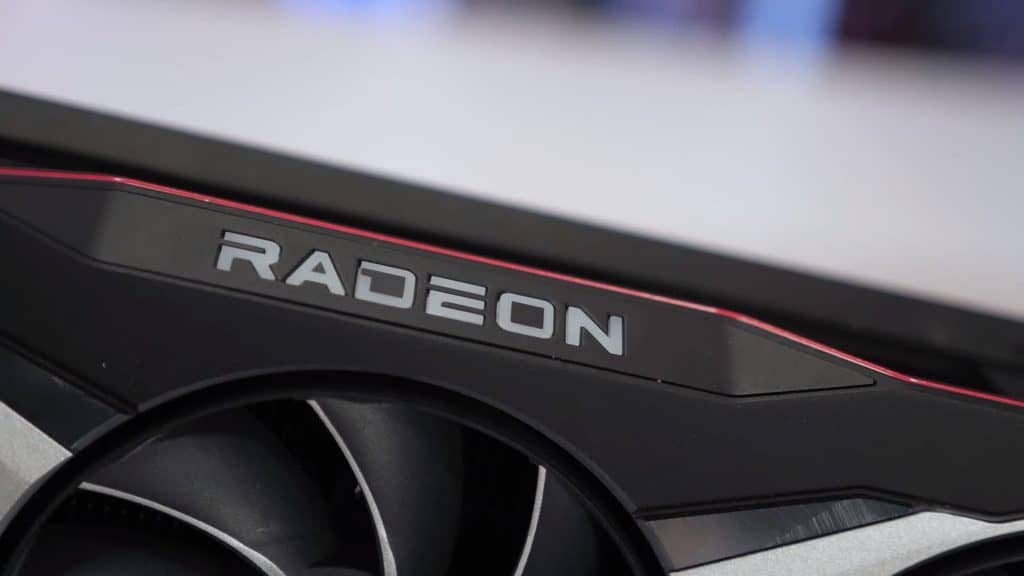
Another aspect of RDNA2 is Smart Access Memory, something Nvidia was only working on at the time. This feature offered enhanced access to GPU VRAM, the whole of its VRAM, instead of the 256MB segments that were accessible at one time in the previous RDNA(1) series.
Nvidia’s Ampere, which is smaller than its predecessors, packs significantly more transistors into a smaller area (17.4 billion). Nvidia’s second-generation Ray Tracing tech and deep learning hardware are at the core of Ampere, and it is, in general, the fastest GPU architecture in the world.
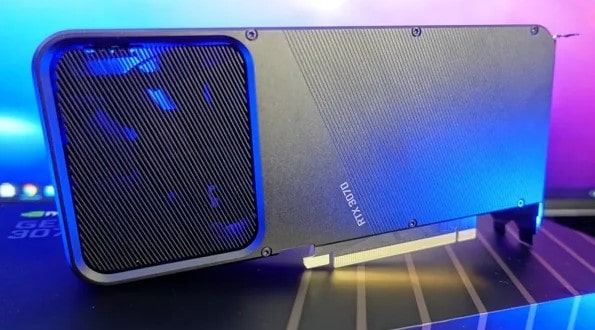
However, the 3070 doesn’t really rival the 6800 XT as it has less bandwidth, transistors (26.8 billion), memory, and memory access. Even if Nvidia’s Ampere architecture is on another level in general, when comparing these two cards, the 6800 XT takes the (graphic) cake.
Winner: AMD Radeon RX 6800 XT
Clock Speeds & Overclocking
When you compare the two, the 6800 XT has the upper hand in both “base” and “boost” clock speeds, as well as max clock speeds. Its base speed is 1.825 GHz, compared to GeForce’s 1.50 GHz. The 6800 XT also wins in boost clock, with 2.25 GHz compared to 1.73 GHz, respectively.
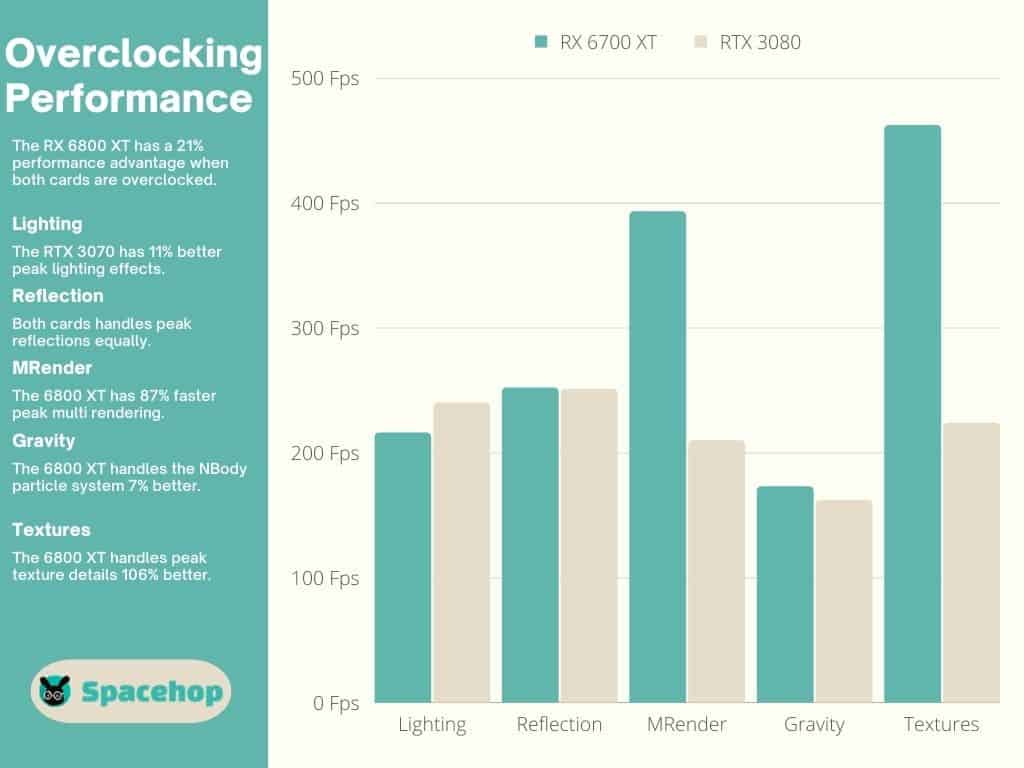
Clock speeds are the frequency at which the GPUs operate. “Base clock” is the default operating speed of a graphics card. It can be “overclocked,” but you shouldn’t take overclocking lightly, as you can damage your card if you push it too far. This is because computer components generate heat, and the more you push them, the hotter they get.
| RX 6800 XT | Boost Clock | RTX 3070 | Boost Clock |
|---|---|---|---|
| ASRock RX 6800 XT Taichi X OC | 2,360 MHz | ASUS ROG STRIX RTX 3070 GAMING OC | 1,905 MHz |
| ASUS ROG STRIX LC RX 6800 XT GAMING OC | 2,360 MHz | ASUS ROG STRIX RTX 3070 V2 GAMING OC | 1,905 MHz |
| ASUS ROG STRIX RX 6800 XT GAMING OC | 2,360 MHz | MSI RTX 3070 SUPRIM X | 1,905 MHz |
| Dataland RX 6800 XT Ares X | 2,360 MHz | Colorful iGame RTX 3070 Vulcan OC | 1,875 MHz |
| PowerColor Liquid Devil RX 6800 XT | 2,360 MHz | Colorful iGame RTX 3070 Neptune OC | 1,845 MHz |
Overclocking can send your card into dangerous territory in terms of heat, something that will surely shorten its lifespan. If you ever want to give overclocking a try, be sure to set the fan speed to the highest setting to compensate for the heat your card will produce while you fiddle around with its settings.
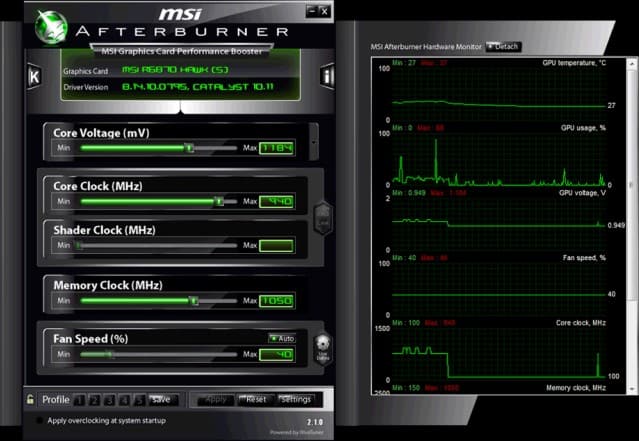
If you’re curious about trying this, be sure to use AMD software (instructions here) for the AMD 6800 XT. You can overclock Nvidia’s cards through the performance tab of Nvidia’s software or using MSI Afterburner.
Winner: AMD Radeon RX 6800 XT
Also Read: MSI Afterburner – The Complete Guide (Beginner and Advanced)
GPU Cores
The more cores in a GPU, the better the results for you as a user. Cores handle everything from lighting and shadows, through physics, and certain types of anti-aliasing, to ambient occlusion and more. To translate, this means in-game scenery, characters, and pretty much everything that makes up your favorite game.
Nvidia uses CUDA cores (Compute Unified Device Architecture) which are a small part of a larger whole. CUDA, a specialized programming language, leverages your GPU in specific ways and achieves greater performance. These cores are parallel processors, much like a CPU with two, four, or eight cores — only Nvidia’s GPUs have thousands.
What Nvidia calls CUDA cores, AMD calls Stream Processors, and they are the same thing in essence. Due to the higher count available in the 6800 XT, I have to give this one to AMD as well.
Winner: AMD Radeon RX 6800 XT
VRAM & Memory Specs
Both the 6700 XT and the 3070 use GDDR6 memories, but AMD offers twice as much in the 6800 XT as Nvidia does in the RTX 3070. Its 16GB shadows the 8GB that is offered in the 3070 and renders it somewhat future-proof. And, when you take into account AMD’s Infinity Cache and Smart Access Memory, there is no doubt who the winner here is.
Winner: AMD Radeon RX 6800 XT
Shaders, RT cores, and TMUs
Shaders are generic programs that calculate optimal light, darkness, and color settings when rendering 3D in-game images. The sheer number advantage that the 6800 XT has (8,960) over the 3070 (5,888) puts it in first place here.
Nvidia uses dedicated Ray Tracing cores which free up the GPU to handle other things, while AMD uses something they call Ray Accelerators, which are part of the Compute Structure in RDNA2. Whatever they are trying to convince you of, dedicated is better than non-dedicated.
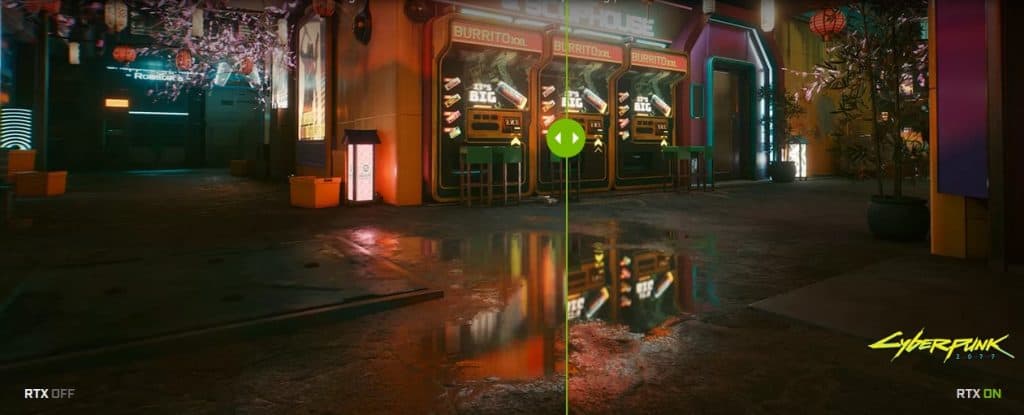
Ray Tracing graphically renders light in a way that simulates the physical behavior of light in the real world. Needless to say that this is far from the real thing, but you can’t but appreciate the advancements Ray Tracing has brought to our visual experience during gaming.
The 6800 XT has a total of 72 Ray Accelerators as it has one per compute unit. The 3070 may have only 46 Ray Tracing cores, but they work independently from the rest of the GPU, unlike those of the 6800 XT. Nevertheless, the 6800 XT has tested better across all settings than the 3070 (but not by how much you would expect everything considered).
TMUs or Texture Mapping Units are low-level components of GPUs critical to video game rendering. They handle the texture of objects, something that would disappear without TMUs whenever you changed your angle of view. The 6700 XT has 288, overshadowing the 3070’s 184.
Winner: AMD Radeon RX 6800 XT
Performance & Resolutions
Comparing AMD with Nvidia isn’t as simple as you’d think. On paper, the 6800 beats the 3070 by 11% at 1440p and 10% at 4K. My benchmark testing gave similar results. But I like to look at user tests most of all because their test environments and results are real-world. And this comparison has some contradicting results.
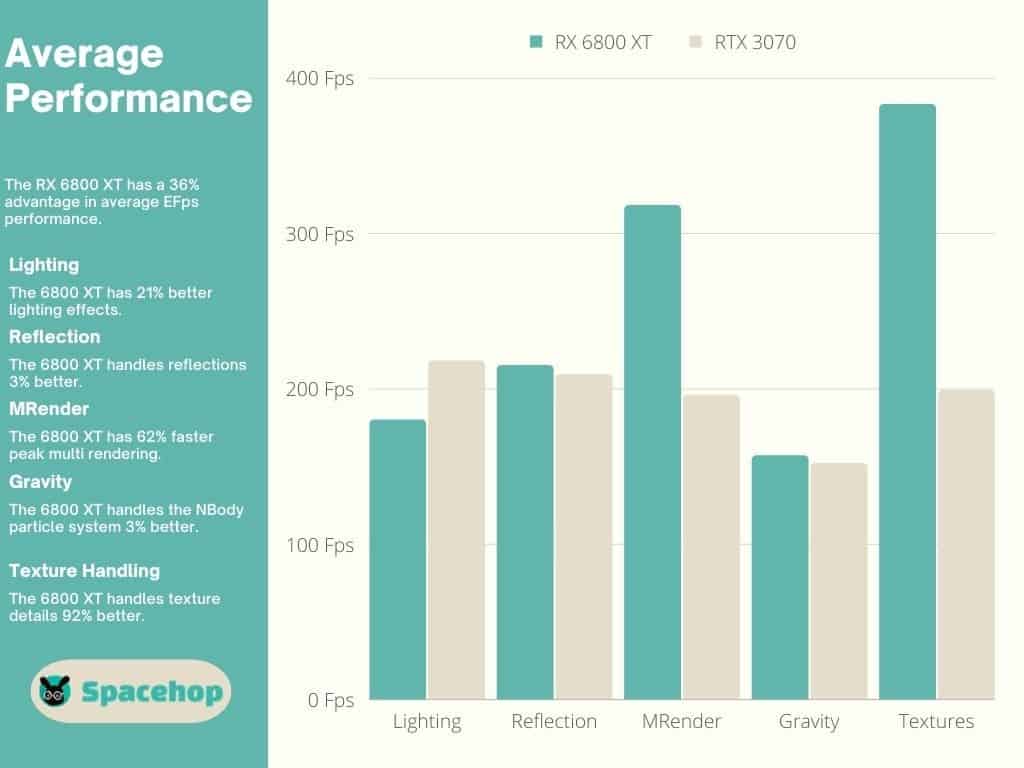
If we look at the average scores of these cards according to users, it’s clear the 6800 XT wins. The same is true when both are overclocked. But, the RTX 3070 has an overall 5% faster effective speed (EFps during gaming). I attribute that to Radeon cards running hotter than Nvidia’s, then throttling performance to cool down.
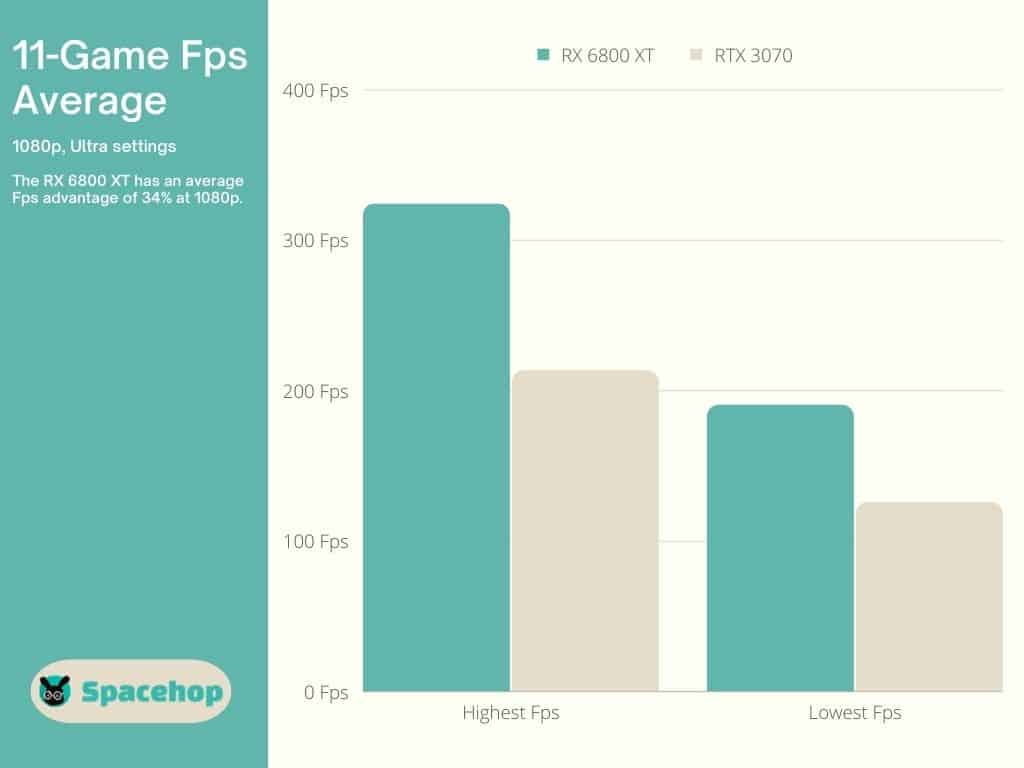
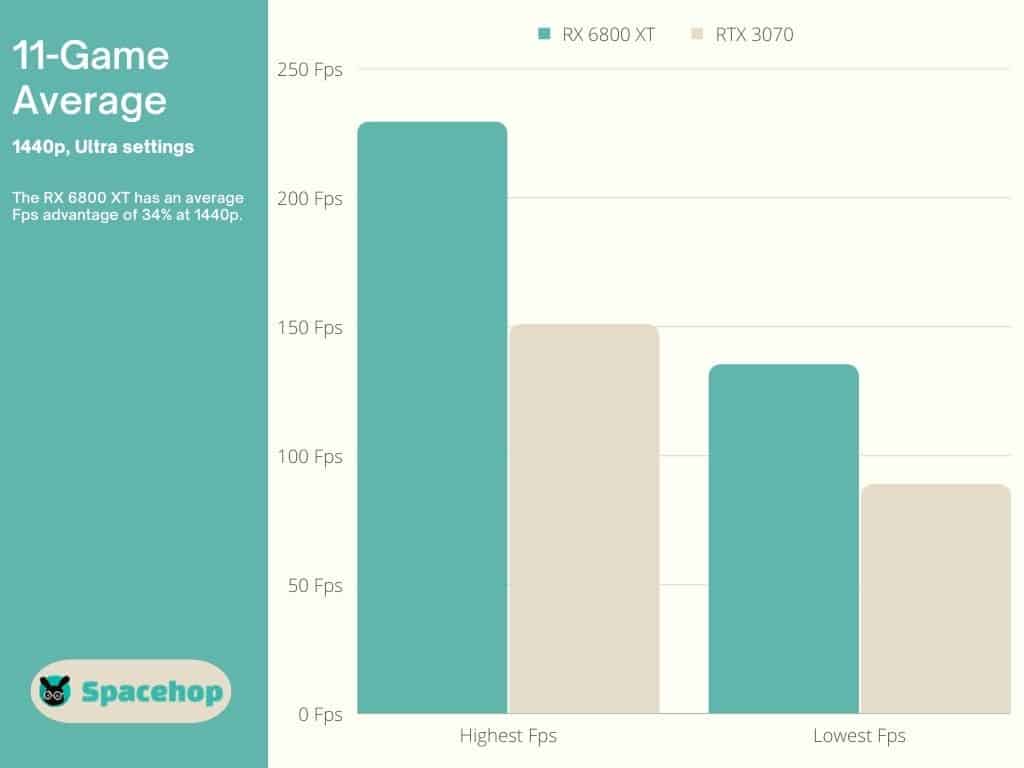
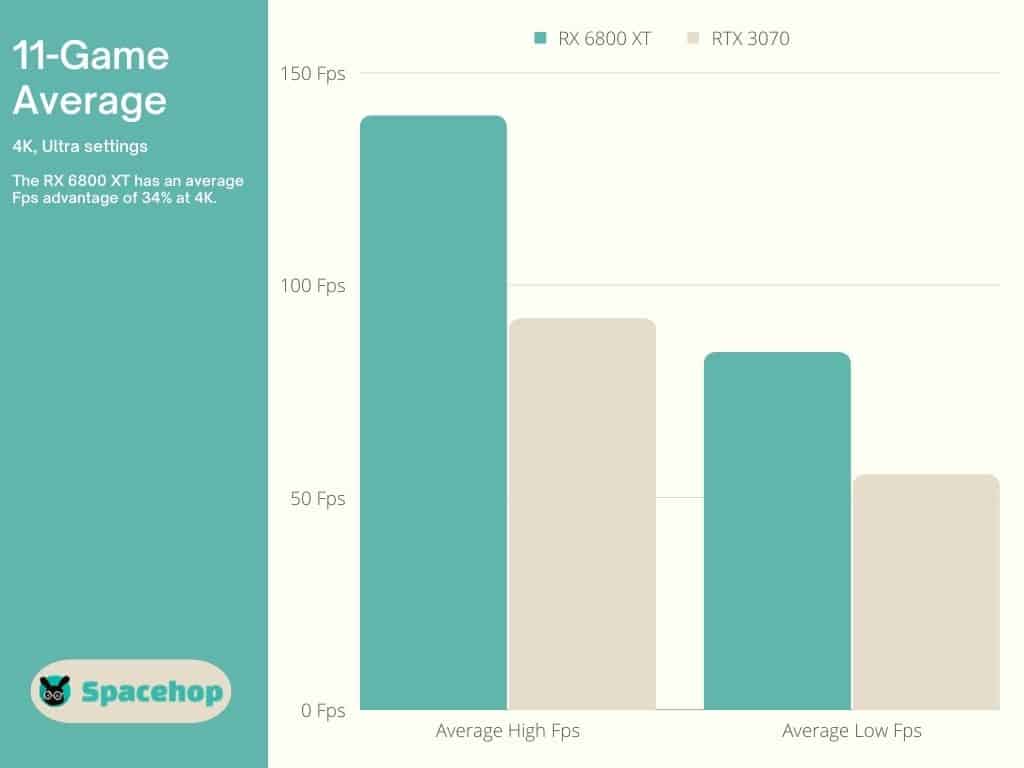
My own 11-game test showed an advantage for the 6800 XT of 34% across all resolutions. Depending on the source, testing has shown an average FPS speed advantage of 11% in favor of the 6800 XT and even an advantage in favor of the 3070 in some games. The average is quite in favor of AMD at lower resolutions, and, interestingly enough, the smallest differences (on average) are seen when both cards are used at 4K ultra settings.
Winner: AMD Radeon RX 6800 XT
Connectivity
You win some, you lose some. The 6800 XT has one HDMI port, two DisplayPorts, and one USB-C port. The 3070 doesn’t have a USB-C port at all but compensates for this with a third DisplayPort. Both support four peripherals.
Both cards are dual-slot, requiring 16-pin PCI Express slots. The 6800 XT has up to three 8-pin connectors for the PSU (depending on the manufacturer). The 3070 had a 12-pin connector in the Founders Edition but comes in variations of 12-pin, 2 x 8-pin, and 2 x 6-pin connectors (depending on the third-party manufacturer).
Winner: AMD Radeon RX 6800 XT
Also Read: Can You Use Nvidia GPU With AMD CPU?
TDP
TDP refers to three terms: Thermal Design Power, Thermal Design Point, and Thermal Design Parameter, and these all mean the same thing. Most commonly, we’re talking about Thermal Design Power or the maximum power a subsystem is allowed to draw from the PSU as well as the maximum heat the component can handle.
The 6800 XT uses more power (300 W), while the 3070 uses less (220 W). The 6800 XT’s heat averages at around 73 degrees Celsius (163.4F) while the 3070 averages at 75 degrees Celsius (167F), both at max load. This differs depending on actual load, clocking settings, PC case ventilation, and so on, but not by much.
Overclocked third-party manufacturers’ versions go above these temperatures, as do their power consumptions, meaning you need to pay attention before purchasing so that you have the correct PSU to handle them.
Winner: Draw
Design and Build

Choosing a graphics card is never about style, yet the design and build do come somewhat into play. The Founder Edition 6800 XT has no ventilation shafts on its rear end, so its three fans will deposit all of its heat into your case. Thankfully, not many (Founders Editions) are left on the market, and you’ll probably have to settle for a third-party manufacturer.

The RTX 3070 Founders Edition has two fans positioned on the bottom when placed into the PCIe slot. This system sucks air into the card and vents it through the back of your PC case. Since it’s almost impossible to find one, you’ll have to settle for a third-party manufacturer here as well, but these can vary a lot.
Also Read: GPU Fans Not Spinning: Common causes and how to fix!
Standout Features
Ray tracing cores definitely stand out when we compare AMD and Nvidia. As mentioned, Nvidia introduced ray tracing with their RTX cards, and while AMD trots along with its Ray Accelerators, it’s just not the same thing.
Pricing & Availability
The Founders Edition 6800 XT was priced at $649 when it came out and has skyrocketed since then. Not a lot of these are available on the market, so if this is your choice, grab it while you can here. The market is overflowing with third-party manufacturers, ranging from ASUS, MSI, and GIGABYTE, to many others.
The Founders Edition 3070 debuted at a significantly lower MSRP of $499. Third-party manufacturers such as ASUS, MSI, GIGABYTE, and others are readily available for purchase, but their prices, specs, and sizes vary.
Conclusion
When I compare the 6800 XT vs 3070, there is no doubt that AMD wins. It’s just the better card, which is understandable as the 6800 XT is more comparable to Nvidia’s 3080. Nevertheless, if you’re on a bit of a budget (if you can call $500+ for a GPU a budget), the 3070 will handle almost everything you throw at it.
Both cards allow you to max out settings, but if you’re looking for higher FPS, the 6800 XT is your best bet. And both will keep you satisfied for a long time to come, though the 6800 XT is more future-proof than the 3070 due to its better specs.